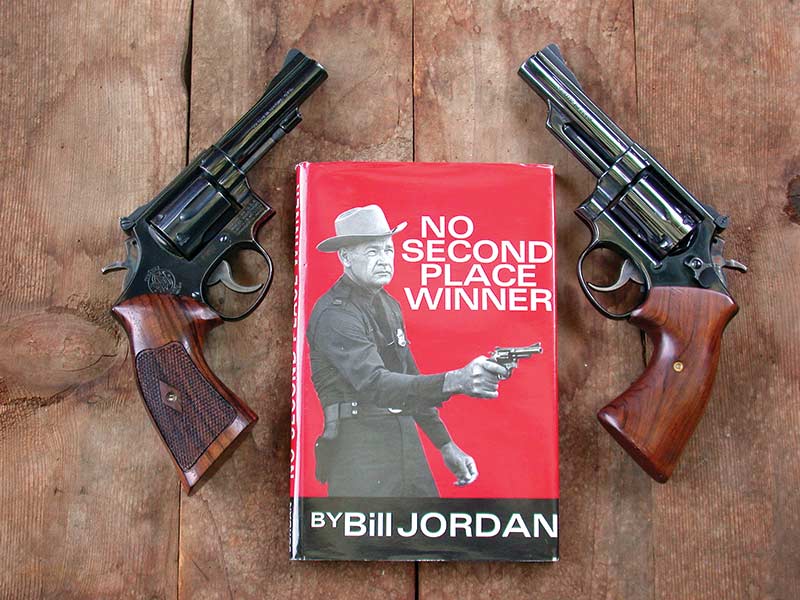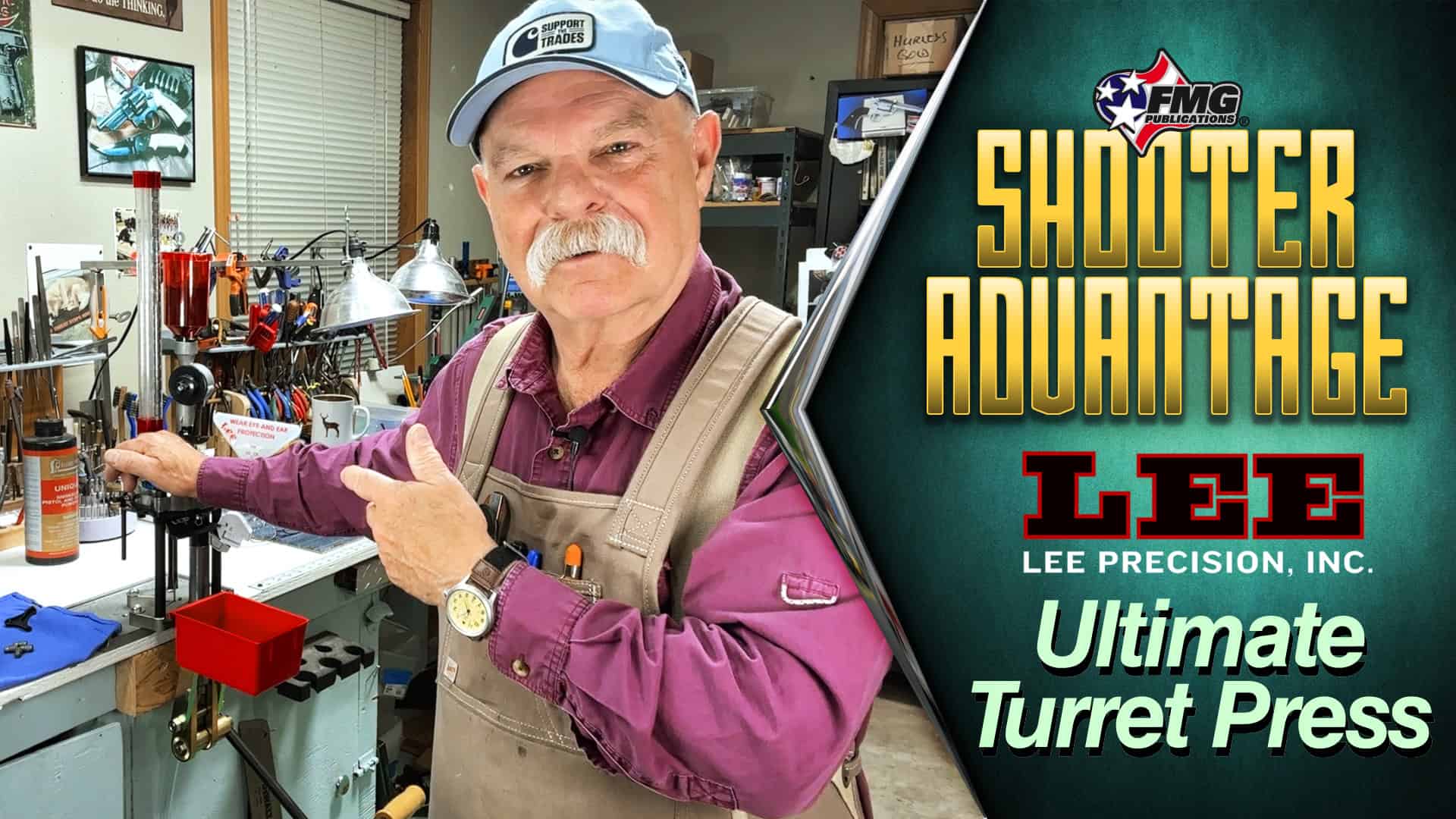The Combat Magnum
Good Gun Gone
It was a rare privilege, in fact probably unique. I’d been invited to take part in our Sheriff’s semiannual qualification course. I knew several deputies quite well as they were dedicated handgunners and one just happened to be the training officer way back when revolvers ruled and virtually every peace officer in the country carried a double-action Colt or Smith & Wesson in a Jordan-style holster.
I used my prized Model 19 with an action as slick as proverbial glass and the custom BearHug Grips’ Skeeter Skelton stocks fitted my hand perfectly. I loaded up several boxes of standard .38 Specials and, with some trepidation, prepared to enter a different world — that of the duty officer.
Expectations
I had no idea what to expect and, with my 4″ Combat Magnum in a hip holster and extra cartridges in my pocket, I stepped up to the line. This first phase consisted of firing six rounds doubleaction only and reloading twice for total of 18 rounds in one minute. I hoped I would have enough time and after firing my 18 rounds I waited and waited and waited for what seemed like a long time for that minute to end. As the signal sounded ending the first phase an officer came up to me and said, “Who are you? Where did you come from?” I thought I had done something wrong! In fact I had. “No one has ever shot a perfect score on this first phase!” All of my shots were dead center in the silhouette target and to my mind the course was very easy at this point. All shooting is basically the same, sight alignment and trigger squeeze, both of which I was able toaccomplish 18 times in plenty of time.
We fired standing at several distances both in the open and from a barricade and then came what I expected to be my downfall. Running up a slight incline for 50 yards and then firing six shots from prone at a target 50 yards away. I expected to be out of breath and, having no neck to speak of, I also expected great difficulty shooting prone. I ran, flopped on my belly, and triggered off six rounds from that super smooth Combat Magnum. I was surprised to find all shots again dead center and I ended the qualification course with a perfect score, the first one ever fired. Several of the officers took my lead and began to practice a little more and the next couple of times I fired the course there were several perfect scores. Learning long ago not to mess with perfection I had “retired” that Combat Magnum from the qualification course and the next two times used a S&W 4″ .45 Colt and a Ruger P85.
The Smith & Wesson Combat Magnum was inspired by the Smith & Wesson Combat Masterpiece, an adjustable sighted, 4″ .38 Special revolver built on the Military & Police frame dating from 1899, and the idea of the perfect peace officer’s revolver from the mind of Bill Jordan of the
United States Border Patrol. Jordan surmised officers would appreciate carrying a smaller and lighter .357 revolver than the heavy N-frames
S&Ws then available. Jordan asked Smith & Wesson to chamber the Combat Masterpiece in .357 Magnum and fit it with a bull barrel with an enclosed ejector rod housing. They did and a true classic sixgun was born.
Dream Sixgun
For Bill Jordan the .357 Combat Magnum introduced in 1955 was the Peace Officer’s Dream Sixgun. Its smaller diameter cylinder, lighter weight, and smaller grip frame made it much easier to pack in relative comfort all day and also easier for smaller hands to handle. It not only was an excellent revolver for law enforcement use, it soon gained a large following among outdoor types who needed a powerful and easily packable pistol. While not even a good choice for defense against big bears, the .357 works fine for that most dangerous of critters walking on two legs. Before the decade of the ’50s ended I had my first 4″ Combat Magnum mated up with a carrying rig I made myself consisting of a 21⁄2″ belt with 12 cartridge loops on the offside and a Tom Threepersons-style holster. It certainly carried much easier, in fact was hardly noticeable compared to the 4″ N-frames.
The 4″ Combat Magnum was an absolutely beautiful sixgun with its deep S&W bright blue finish, heavy barrel with enclosed ejector rod and goncala alves target stocks. With the coming on the new numbering system for all Smith & Wesson revolvers it became the Model 19 in 1957. A 6″ barrel was added in 1963 followed by the 21⁄2″ three years later. All versions were available in blue or nickel and in 1970 the 4″ stainless steel Model 66 was introduced followed by the 21⁄2″ in 1974 and the 6″ in 1978. Both the 21⁄2″-barreled Model 19 and 66 had rounds butts.
Theory And Practice
Bill Jordan envisioned the Combat Magnum to be carried with .357 Magnum loads while using the .38 Special loads for practice. Some complained of the Model 19/66 not holding up to continuous use of .357 loads. One of the problem areas was the relatively thin forcing cone while the other complaint, especially with the Model 66, was the cylinder locking due to the gas ring expanding with the heat of rapid-fire loads. The latter was addressed in 1977 with the moving of the gas ring from the yoke to the cylinder, and then in 1980 the Model 19/66 was “upgraded.” Gone was the light weight of the Combat Magnum replaced by a heavier and larger cylinder in a new revolver called the Model 586 in blue or nickel and Model 686 in stainless steel. The new L-frame revolvers were larger and heavier than the K-frame Combat Magnums yet maintained the Kframe grip.
Personally I never experienced any problems resulting from using .357 Magnum loads in several Model 19s in all three barrel lengths as well as both blue and nickel models. Most of my .357 Magnum loads over the past half-century have been assembled with my own cast bullets and 14 to 15 grains of 2400 powder and either the Lyman-Keith 358429 173-grain plain-based or Lyman-Thompson 358156 gas-checked bullets. Curiously, my K-frame 4″ Model 19 will handle heavier loads than my 5″ N-frame Model 27. Fired cases literally fall out of the 19 while they stick in the 27, proving once again every sixgun is a law unto itself.
The advent of the 586/686 revolvers was a good news/bad news proposition. The good news is the fact they are probably the best double action .357 Magnum revolvers ever offered by Smith & Wesson, or anyone else for that matter. The bad news was it would be only a matter of time until the Model 19 was dropped from production and the day of the K-frame .357 Magnum is now over. The 586 is also gone, however the 686 remains. For shooting a lot I prefer the newer L-frame .357 Magnums, however, most revolvers are carried more than shot and the Combat Magnum remains the easiest packing, finest looking, all-steel .357 Magnum S&W ever offered. I intend to keep mine and hopefully they will be used by my grandkids and passed on to their grandkids. Bill Jordan had a great idea. Progress killed it.

Get More Revolver Content Every Week!
Sign up for the Wheelgun Wednesday newsletter here:





